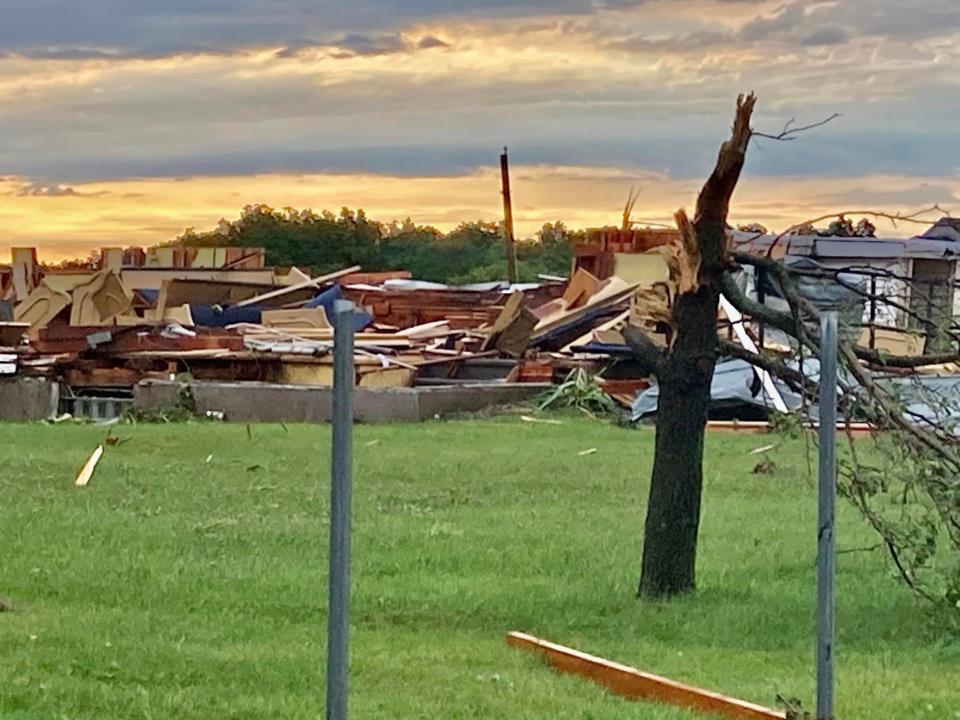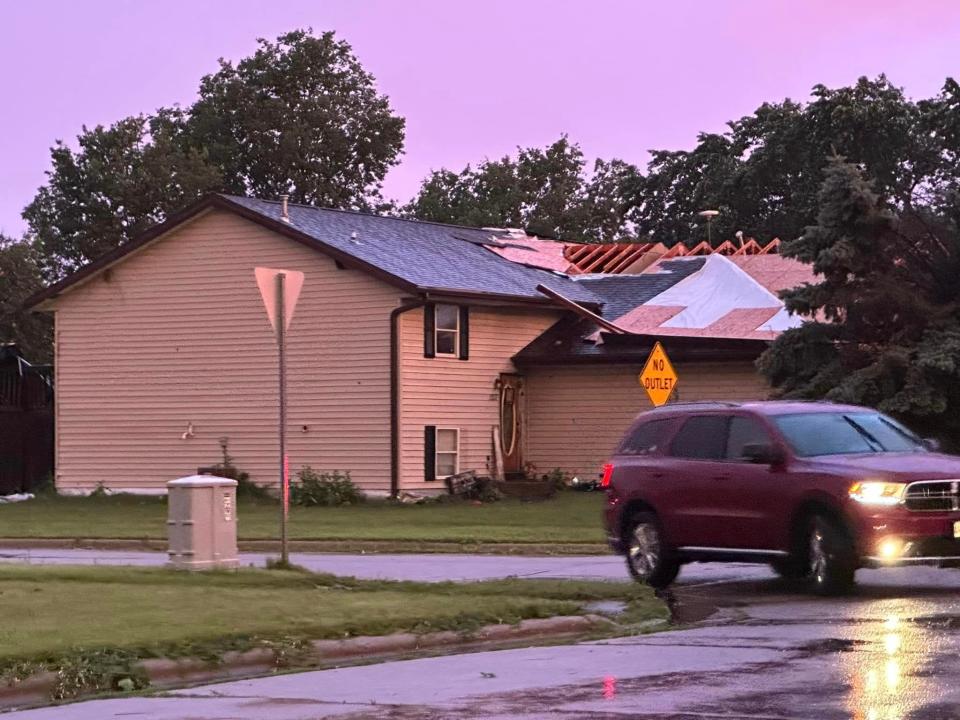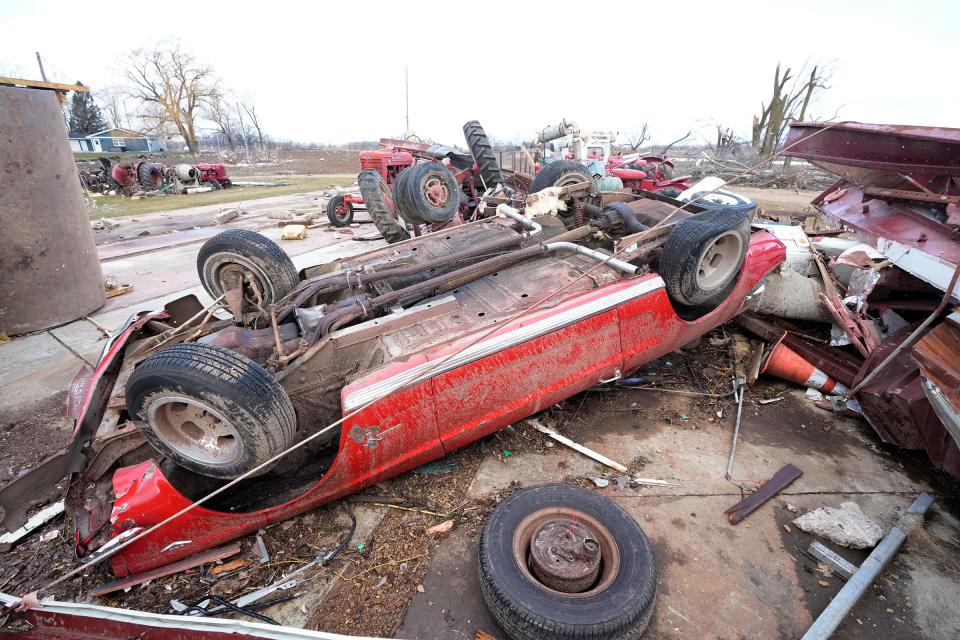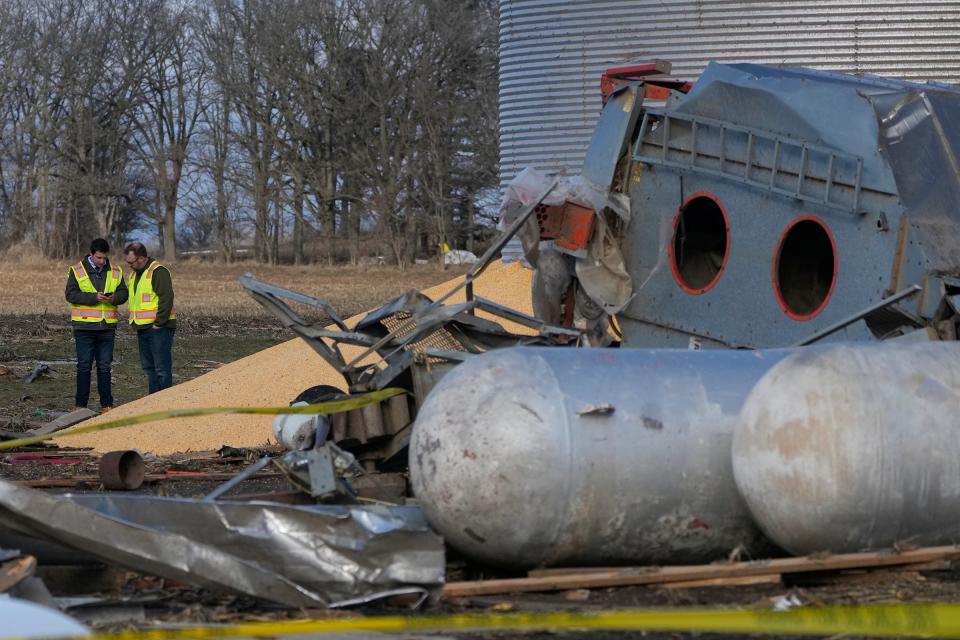Wisconsin has seen far more tornadoes than average this year. Is climate change to blame?
Tornado season in Wisconsin has looked a little different this year.
With over five months remaining in 2024, the state has already reached almost double its average annual tornado count. Plus, this winter, Wisconsin saw its first two February tornadoes on record in Evansville and Green County.
A weather phenomenon known as El Niño, which can cause unseasonably warm winters in the northern U.S., was the likely culprit behind the rare winter tornadoes. El Niño is caused when sea surface temperatures in parts of the Pacific Ocean warm to above average for several months. Climate experts say it's difficult to pinpoint the influence of climate change on this winter's El Niño. Still, although El Niño and its counterpart La Niña occur naturally, some experts argue that human-influenced climate change has strengthened their effects.
So what's behind this uniquely tornadic year for Wisconsin? Have climate change, El Niño or other environmental factors played a role? Here's what Wisconsin State Climatologist Steve Vavrus has to say.

How many tornadoes has Wisconsin seen so far in 2024?
As of July 26, 42 tornadoes have been reported in Wisconsin in 2024, with the first of the year being the unprecedented February tornadoes on Feb. 8.
This total puts the state well ahead of its average annual tornado count of 23. This year, Wisconsin has already seen the fourth-most tornadoes on record, according to State Climatology Office data going back to 1950. According to the data, 2005 saw the most tornadoes: 62. There were 46 tornadoes in 2010 and 43 in 1980.
Vavrus said 2024 will almost certainly be one of Wisconsin's three most tornadic years since the year is far from over, and July and August produce some of the most favorable conditions for tornadoes.
All but three of this year's tornadoes have been categorized as EF-0 or EF-1 on the Enhanced Fujita Scale, the least and second-least intense categories. EF-0 tornadoes produce winds between 65 and 85 mph, while EF-1 tornadoes bring winds between 86 and 110 mph. The highest rating is EF-5, with winds over 200 mph.
Wisconsin's three strongest tornadoes this year were rated EF-2, between 111 and 135 mph. They include the February Evansville tornado, which caused extensive rural damage, and the June Argyle tornado, which leveled Apple Grove Lutheran Church.
.oembed-frame {width:100%;height:100%;margin:0;border:0;}
2024 Wisconsin Tornado Count Update: 42. Two tornadoes have been documented from the severe storms on Monday, July 15th. An EF-1 in Grant county and an EF-0 in Rock county. More details at: https://t.co/nzBhhMT8KN #wiwx pic.twitter.com/AfnPhMGoyF
— NWS Milwaukee (@NWSMilwaukee) July 19, 2024
Why have there been so many tornadoes in Wisconsin this year?
Wisconsin recently experienced one of its wettest May-June periods on record, Vavrus said. Heavy rainfall brings strong storms, creating good conditions for tornadoes.
Unlike many weather events, tornado trends are hard to measure because the storms are so infrequent; thus, tornado totals can vary greatly from year to year, Vavrus explained. Last year, Wisconsin saw 21 tornadoes, while it saw 28 in 2022 and 41 in 2021, according to National Weather Service data.
Year-to-year differences in tornadoes are due to how the storm tracks line up and how the jet stream — strong winds in the upper levels of the atmosphere — is situated, Vavrus said. Wisconsin has been on the warmer side of the jet stream this year, leading to more thunderstorms.

Are tornadoes becoming more common in Wisconsin?
A quick glance at the data might suggest tornadoes are becoming more frequent in Wisconsin. The average number reported in the 1950s was just over 10 annually, while it was about 19.5 in the 1990s and over 24 in the 2010s. However, looking at the numbers without context is misleading for multiple reasons, Vavrus said.
First, the way tornadoes are measured has changed over the decades. Technology like Doppler radar allows meteorologists to detect small, weak tornadoes that would've gone unreported in the past.
Second, as the public's interest in storm chasing has grown thanks to social media and films like 1996's "Twister," more weak tornadoes have been reported.
Reports of EF-0 and EF-1 tornadoes have trended upward in recent decades while reports of stronger tornadoes have remained largely consistent, Vavrus said. Additionally, if there is a climate change element affecting stronger tornadoes, it would be difficult to measure as the infrequency of these strong storms would cause such an effect to be "drowned out" by year-to-year fluctuations, Vavrus explained.

How is climate change affecting tornadoes in Wisconsin?
Again, it's hard to say. Of the two main factors that produce tornadoes, climate change is fueling one but diminishing the other.
Conditions are most favorable for tornadoes when there's warm, humid air near the Earth's surface and wind shear ― a change in direction and/or speed of winds from near the ground to higher in the atmosphere that helps storms rotate, Vavrus explained. Warm, humid air near the ground combined with cooler air higher in the atmosphere creates instability favorable to tornadoes.
Due to the warming climate, Wisconsin is expected to see more warm, humid air but less wind shear in the coming years, Vavrus said. It's hard to tell whether this will increase or decrease tornado numbers, and the effects may be region-dependent, he continued. "The speculation is that we'll have a more favorable environment for severe storms that won't necessarily translate into tornadoes ... because they won't get that spin."
What is more clear, Vavrus said, is that climate change is extending Wisconsin's tornado season. Winter temperatures typically do not generate sufficient humidity for tornadoes, but record-tying temperatures in the mid-50s helped spin up the February tornadoes.
"There's every reason to think that, as we get more warmth in the shoulder months like March and April and September, October, November, in the future, we'll be seeing more tornadoes during those months when it's been very uncommon in the past," Vavrus said.

Is 'Tornado Alley' shifting east?
America's infamous "Tornado Alley," which historically encompasses central states like Texas, Oklahoma, Kansas and Missouri, also appears to be changing. Experts have found that, in recent decades, tornado activity has increased in the Midwest and southeastern U.S. while it's decreasing in the Great Plains.
A widely-cited 2018 study by Northern Illinois University meteorology professor Victor Gensini found that since at least 1979, tornado-prone conditions ― warm, humid air and wind shear ― have appeared to increase in the Midwest and east while decreasing in the Plains. However, it is currently unknown if this is due to rising global temperatures or natural variability, Gensini writes.
More: Wisconsin is already at yearly average of tornadoes in 2024
More: Tornado can't stop 'perfect' first dance at couple's Lake Geneva wedding, thanks to family reunion
This article originally appeared on Milwaukee Journal Sentinel: Why is Wisconsin getting so many tornadoes in 2024?

